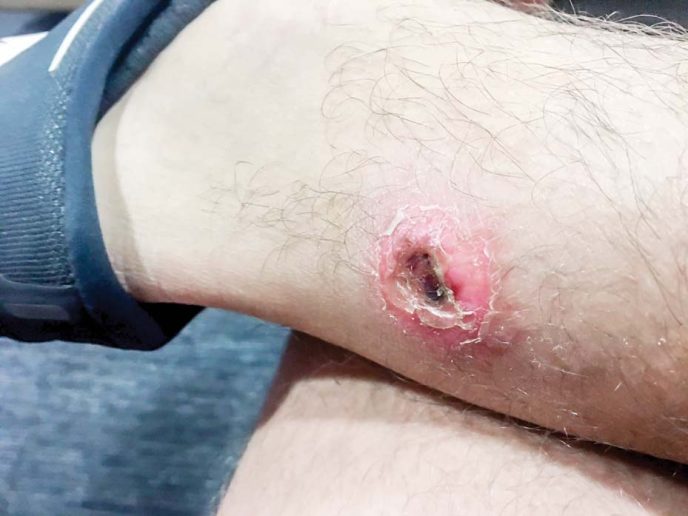A NEW way of reducing the breeding grounds of mosquitoes, such as in stagnant water, is being trialled in the fight against the flesh-eating Buruli ulcer on the Mornington Peninsula.
The “source reduction method” is an alternative tactic to those proposed as part of the study aimed at reducing mosquito numbers and evaluating the effect on the spread of the ulcer which has infected dozens of residents since migrating from the Bellarine Peninsula over the past five years.
The source reduction method involves mosquito experts going door-to-door to advise home and business owners on how to identify mosquito breeding sites on their properties and taking steps to eradicate them.
Former mayor Cr David Gill said the council would undertake “broad community consultation” before proceeding with an actual mosquito control in this study.
“We want to see the spread of the Buruli ulcer on the Mornington Peninsula come to an end, but we want to ensure the risk to other insects and wildlife is minimal as we investigate the mode of transmission,” he said.
“We’re committed to working with our community to ensure their views are taken into consideration, as such the mosquito control study has been postponed this year.”
The mosquito control study scheduled to start early next year will involve mosquito surveillance, trapping and control activities. It is being informed with advice from doctors, entomologists, council staff and research partners and is part of the Beating Buruli in Victoria project. This aims to disrupt the transmission of the ulcer and lead to evidence-based policies and guidelines to help stop its spread.
The project is being conducted via the Doherty Institute, Barwon Health, Austin Health, CSIRO, Agribio, the University of Melbourne, Mornington Peninsula Shire, and Victoria’s Department of Health and Human Services.
Mosquito surveillance will continue as planned from this month (November) to April 2020. About 180 mosquito traps will be installed in the original study area, as well as other bayside locations where the ulcer has been reported. About 45 traps will be installed on private land with the owners’ consent.
“There has been a strong response from members of the community wanting to host these traps to support the scientific study,” Cr Gill said.
The traps will be emptied every fortnight over a 25-week period.
Lead researcher for the project, Professor Tim Stinear from the Peter Doherty Institute for Infection and Immunity, said the traps would not catch other insects, including bees.
“This mosquito trap is used all over the world to study mosquitoes. Even if another insect flew right up to it, it could fly off again when it chooses to,” Professor Stinear said.
“The traps may even assist with reducing mosquito numbers.”
The mosquitoes will be analysed in a laboratory to determine if they are carrying the bacteria responsible for the Buruli ulcer.
Residents can protect themselves by using insect repellents and wearing long clothing. They should cover cuts or abrasions with sticking plaster and wash and cover scratches or cuts received while working outdoors. Those affected should see their doctor if they have a skin lesion and mention the possibility of Buruli ulcer.
First published in the Southern Peninsula News – 19 November 2019


